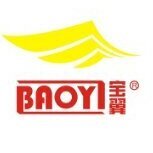-
Welcome to Auto Parts Forum
Whether you are a veteran automotive parts guru or just someone looking for some quick auto parts advice, register today and start a new topic in our forum. Registration is free and you can even sign up with social network platforms such as Facebook, X, and LinkedIn.
Serpentine Belts Have a Strong Supporting Cast
-
Similar Topics
-
By WiperTech008
No, cars haven't always had wipers. Early automobiles lacked many safety features, including wipers, leaving drivers to rely on goggles for protection from rain and debris.
The First Windscreen Wipers
The first wiper was patented in 1903 by Mary Anderson. Her manually operated design allowed drivers to clear the windshield using a lever. In 1917, Charlotte Bridgwood improved on this by introducing an automatic system powered by rollers. Despite their innovations, these early wipers were slow to gain popularity.
Widespread Adoption
By the 1920s, as cars became more common, manufacturers started including wipers as standard equipment. Early systems were vacuum-powered, but in the 1960s, electric wipers became the norm, offering more reliable and efficient performance.
Modern Wipers
Today’s wipers are advanced, featuring variable speeds, intermittent settings, and rain-sensing technology. These improvements ensure clear visibility and safety in all weather conditions.
Wipers have come a long way from their manual beginnings, evolving into essential safety features that every car relies on today.
Share your thoughts below🚗💨
-
By Counterman
link hidden, please login to view proudly shares the story of its recent NTN Bearing Community Engagement event. This event took place at link hidden, please login to view in Lake Bluff, Illinois. On Tuesday, March 25, 2025, a dedicated group of NTN employees volunteered for the charitable organization. The organization sources and distributes new and gently used books to children in the Chicagoland area. Volunteers Pack and Inspect Books
With the help of volunteers, Bernie’s Book Bank has provided over 23 million books. These books went to families without children’s books at home since 2009. During this event, NTN volunteers packed eight books into bags for distribution. They also inspected donated used books to ensure their good condition. In total, NTN employees assembled 1,852 bags with 14,816 books for distribution.
NTN Bearing Community Engagement: Supporting Local Communities
“Over the past two years, we have formed a great relationship with Bernie’s Book Bank,” said Pete Eich, president of NTN Bearing Corporation of America. “For many of our employees who participated, including myself, we believe there is no better feeling than to reach out and help kids. Many of us have children or grandkids who love to have books read to them before taking a nap or going to bed at night. Unfortunately, there are kids in the Chicagoland area who do not have this same opportunity. Our involvement with Bernie’s Book Bank helps address this issue and brings the joy of reading to many children.”
NTN’s Community Spirit & Engagement Program
link hidden, please login to view launched its Community Spirit & Engagement Program in January 2023. This program focuses on managing the company responsibly and ethically. It also makes positive contributions to the community and builds partnerships with other organizations. The program encourages employees to take an active role in community service. This reflects NTN’s commitment to corporate citizenship. Looking Ahead to Future Community Outreach
“I am looking forward to strengthening our relationship with our established community partners during quarterly community outreach programs in 2025,” said Eich. “We also look forward to creating new partnerships.”
The post
link hidden, please login to view appeared first on link hidden, please login to view.
link hidden, please login to view -




Recommended Posts
Join the conversation
You can post now and register later. If you have an account, sign in now to post with your account.
Note: Your post will require moderator approval before it will be visible.